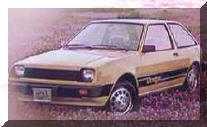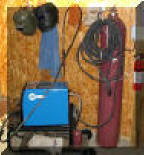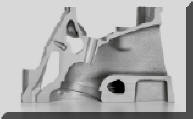History of Saving Gasoline
Go Green.. |
|
MOBIL ECONOMY RUN
This event that
took place every year from 1936 to 1968.
The purpose of the Mobil
Economy Run was to determine the mileage potential of American passenger
cars under typical city and country driving conditions. Mobile Oil
Corp sponsored the event and it was managed by the United States Auto Club
(USAC). There were eight classes based on wheelbase, engine and body size.
The five-day, 1,900 mile trip went from Los Angeles to Kansas City.
Mickey
Thomson and his wife Judy both drove cars in the 1962 Mobil Economy Run. They
both took first place in their class. Mickey in a Pontiac Star Chief
averaging 19.3 MPG and Judy in a Pontiac Tempest averaging 27.3 MPG.
The cars were unmodified pure stock
that USAC acquired from dealers. What’s somewhat ironic is gasoline was about $0.25/gallon at the
time! I recall drivers could not use a vacuum gauge
or a throttle cable (which was the cruse control of the day and actually
much better for managing mileage (will explain later!) I also remember one
winner being quoted in a car magazine as saying; "You just drive as if you had a raw egg between
your foot and the gas peddle!" With the fuel mileage gauges many cars
have today you can be a champ as well! Just think
about that raw egg!
WONDER WHY THE OIL COMPANIES DON'T HAVE SOMETHING SIMILAR TODAY? Hmmm,
could it be they are only thinking about next quarter's profits?!
It's similar to our recently patented products that can easily and
economically save 1/2 the MIG shielding gas used! Does anyone have
the incentive to help reduce MIG gas usage even though they are aware the
average fabricator wastes 3 to 4 times the MIG gas they purchase?
Check Out Independent
Published MIG Shielding Gas Waste Data. |
|
MY PERSONNEL EXPERIENCES
IMPROVING GAS MILEAGE
2008 Corvette
 On
a 600 mile round trip with my 2008 standard transmission Corvette I
averaged 28.5 MPG. Used both the instantaneous and average MPG gauges
to check how I was doing. Speed was about 5 MPH over the 60 to 70 MPH
speed limits. The roads traveled were mostly flat and used cruise
control but could have done better on the hilly sections using a fixed
throttle setting. On
a 600 mile round trip with my 2008 standard transmission Corvette I
averaged 28.5 MPG. Used both the instantaneous and average MPG gauges
to check how I was doing. Speed was about 5 MPH over the 60 to 70 MPH
speed limits. The roads traveled were mostly flat and used cruise
control but could have done better on the hilly sections using a fixed
throttle setting. |
|
1979 Dodge Colt
 When
they implemented “odd-even” gas purchase rationing my ’74 CJ5 V8 Jeep
couldn’t make it to LaGuardia airport and back home to Connecticut on one
tank of gas. If I left on a trip and came back on “can’t fill up” days - I was
stuck! Bought a Dodge Econobox with a 1.6 L engine and 8 speed standard
trans (it had a 4 speed with a second stick two speed!) When
they implemented “odd-even” gas purchase rationing my ’74 CJ5 V8 Jeep
couldn’t make it to LaGuardia airport and back home to Connecticut on one
tank of gas. If I left on a trip and came back on “can’t fill up” days - I was
stuck! Bought a Dodge Econobox with a 1.6 L engine and 8 speed standard
trans (it had a 4 speed with a second stick two speed!)
The car had a 35 MPG EPA
rating and if driven carefully I could reach 35 MPG. I also installed a JC
Whitney MPG meter which could read instantaneous and average MPG
(interesting device.) On the 35 mile trip to work each day I would try to
reach 40 MPG or better. On one occasion I had a bet with my 2 buddies in
our car pool that I could reach 50 MPG! Having the experience of what it
took to make 45 MPG I used all the tricks. The biggest being “keep the
throttle at a fixed setting.” Now that meant when I went up the hills there
was a crowd of cars behind me getting mad! But on the downhills we made up the
speed. Since most of the trip was on 4 lane roads we only held up traffic
on the short two lane roads! It was mostly highway driving but we reached
the 50 MPG mark!
Around town I also
practiced energy conservation by avoiding having the energy spent getting up
to speed go to heat by using brakes. When I saw I was coming to a stop I
coasted as much as possible. Gas use while coasting is very low especially
in today’s fuel injected cars. Note: I don’t recommend shutting off the
ignition since you reduce car control and if your steering wheel locks - even
worse! |
|
Uncle Fred
We mentioned Uncle Fred
in our Rat Rod page. He also relayed his
experience with gas mileage in the 1960's. Folks even then complained
their new car did not get the gas mileage the brochure said it would!
Uncle Fred managed the Service Department of a large Chevy Dealership
and would have to address their concerns. He ran a very careful test.
He drove their car with the owner in the passenger seat. He pulled up
to a gas pump noting which pump and direction they stopped. He
had the owner fill it up to the top. He then drove the car to the
highway making a 30 mile trip. He then pulled into the same gas
station, same pump, same side. He had the owner fill it up to the top
again. He said he typically got 30 to 50% better mileage than they
said they were getting. It usually exceeded the number in the
brochure. Uncle Fred drove like he had a raw egg between his foot and
the gas peddle! It works. |
|
Gas
Saving Tips:
·
Keep Your
Car Up to Snuff
o
Check Tire
Pressure often setting it at the high end of manufacturers recommendations.
o
Keep Air
Filter Clean. Buy a low restriction lifetime product like K&N and clean it at
recommended intervals.
o
Have
Alignment Checked and have toe-in set closest to zero allowed by
specifications.
o
Use Low
Viscosity Synthetic Oil like 5-30. The lower the better for reduced
friction. Some NASCAR teams use 0 weight oil or lighter!
o
Buy
Regular Gas. Check your owners manual to be sure it's allowed but even
my 436 HP Corvette can run on Regular! It has a program built in to
set timing and injectors to avoid pre-ignition if detected by the knock
sensors. If you drive as suggested to save gasoline using a light throttle
and don't lug the engine at low RPM that low octane program may not even
need to kick in! |
|
·
Your
Driving Style is Most Important
o
Drive Like
You Have a Raw Egg Between Your Foot and the Gas Peddle (that can gain 20+%
better mileage!)
o
Use Cruse
Control if you have few hills. If your in a hilly area use a constant
throttle approach, i.e. slow down going up hill and make up time on the
downhill. Old cars had throttle control cables on the dash!
o
Keeping
Highway Speed 55 to 60 MPH will get you 10 to15% better gas mileage than 70
to 75 MPG.
o
Anticipate
Stops-Slow
Down by Coasting and using a minimum amount of brakes (with computer
controlled fuel injection, coasting gets great mileage.) |
|
Only About 13% of the
Energy in Gasoline Gets to the Wheels to Power the Car!
Where Does It All Go?
CLICK |
|
Use Ethanol to Reduce Fossil Fuels? CLICK |
|
. |
|
Have a Welder? You Can Save a Higher
Percentage of MIG Shielding Gas Than You Can Gasoline with Our
Patented Gas Saver System (GSS)!!
You'll Also Improve Weld Starts and
Have a Shielding Gas Cylinder Last at Least Twice as Long!
Note: Our Patented
GSS
is Not Available in "Stores"

A home shop fabricator
in Georgia with a MillerTM 175 amp welder
purchased a 50 foot Gas Saver System ( GSSTM
) so he could use a larger cylinder
and mount it on the wall of his shop. He wrote:
"The system works great.
Thanks for the professional service and
a great product."
Click To See His Home Shop
A Professional
Street Rod Builder Had This to Say:
With their standard MIG welder gas delivery hose the
peak shielding flow at weld start was measured at 150 CFH. That caused air
to be sucked into the gas stream causing poor weld starts. With the GSS replacing their existing
hose, the peak flow surge at the weld start was about 50 CFH. Total gas use
was cut in half.
Kyle Bond, President, quickly saw the improvement
achieved in weld start quality as a significant advantage! Kyle, an
excellent automotive painter, was well aware of the effects of gas surge
caused by pressure buildup in the delivery hose when stopped. He has to
deal with the visible effects in the air hose lines on the spray gun in his
paint booth! The paint surge is visible and creates defects unless the gun
is triggered off the part being painted! We can’t do that with our MIG gun!
|
|

MIG Gas Delivery and the Small Block Chevy
Evolved in a Similar Way and Time!
Both had Advances and
Setbacks Before
They Were Optimized!
Click
for a PDF Report on the Similarities |
|
Purchase Products |

Purchase Gas Saving Products |

Purchase Training Aids |

Purchase
Flow Rate Limiter |

Purchase Wire Feeding Aids |